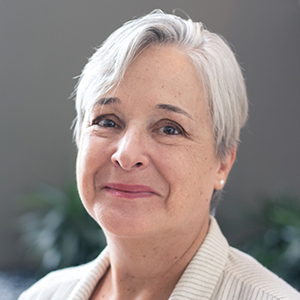We're saving some trees
In theory, I love print.
I’m old-school enough to believe every house should have full bookcases and tables littered with newspapers and magazines. I’m not a fan of e-readers or trying to consume long-form journalism on my phone. I like turning pages. And don’t get me started on digital crosswords.
But let’s be real. I no longer subscribe to a print newspaper or to any magazines. Although I still buy books, I’m beginning to see the appeal of taking a Kindle on a long trip instead of a stack of paperbacks.
And ever since I started this job, back in 2017, we’ve been talking about less print. All ASBMB journals went completely digital years ago, so it wasn’t a total surprise when the ASBMB Council voted in December to reduce ASBMB Today’s print frequency to just four issues per year, starting in 2024.
ASBMB Today is a unique publication. No other competitor society goes to the lengths we do to give its members a platform for their ideas and experiences or to train emerging science communicators to write stories about science and scientists. Of course, we will continue to do those things; we’ll just do it mostly online.
Our January issue went to press days before Council made its decision, so that leaves us with three more print issues in 2024. We plan to put the coverage we had scheduled for February and March into a spring issue to be mailed in April. Because the stories are timely (for example, sickle cell news, Black History Month and Women’s History Month), they’ll run online before being printed. After that, we plan to print issues for August and November.
Because we’re a lemons-into-lemonade team, we’ll seize on this transition to do some overdue digital innovation. We hope the reduction in print frequency will free up time to work on alternative forms of storytelling, including video and audio elements. Telling stories online can be better than print, but the techniques are different. We’re working on that.
If you don’t do so already, I urge you to spend time on our website. We have fresh stories at the top of the home page every morning, so if you make it a habit to start your digital day with us, you’ll see it all.
Of course, we welcome your feedback. Let us know how we can serve you better. You can email me directly at cdorn@asbmb.org.
Enjoy reading ASBMB Today?
Become a member to receive the print edition four times a year and the digital edition monthly.
Learn moreGet the latest from ASBMB Today
Enter your email address, and we’ll send you a weekly email with recent articles, interviews and more.
Latest in Opinions
Opinions highlights or most popular articles

Sketching, scribbling and scicomm
Graduate student Ari Paiz describes how her love of science and art blend to make her an effective science communicator.

Embrace your neurodivergence and flourish in college
This guide offers practical advice on setting yourself up for success — learn how to leverage campus resources, work with professors and embrace your strengths.

Survival tools for a neurodivergent brain in academia
Working in academia is hard, and being neurodivergent makes it harder. Here are a few tools that may help, from a Ph.D. student with ADHD.

Hidden strengths of an autistic scientist
Navigating the world of scientific research as an autistic scientist comes with unique challenges —microaggressions, communication hurdles and the constant pressure to conform to social norms, postbaccalaureate student Taylor Stolberg writes.

Black excellence in biotech: Shaping the future of an industry
This Black History Month, we highlight the impact of DEI initiatives, trailblazing scientists and industry leaders working to create a more inclusive and scientific community. Discover how you can be part of the movement.

Attend ASBMB’s career and education fair
Attending the ASBMB career and education fair is a great way to explore new opportunities, make valuable connections and gain insights into potential career paths.

